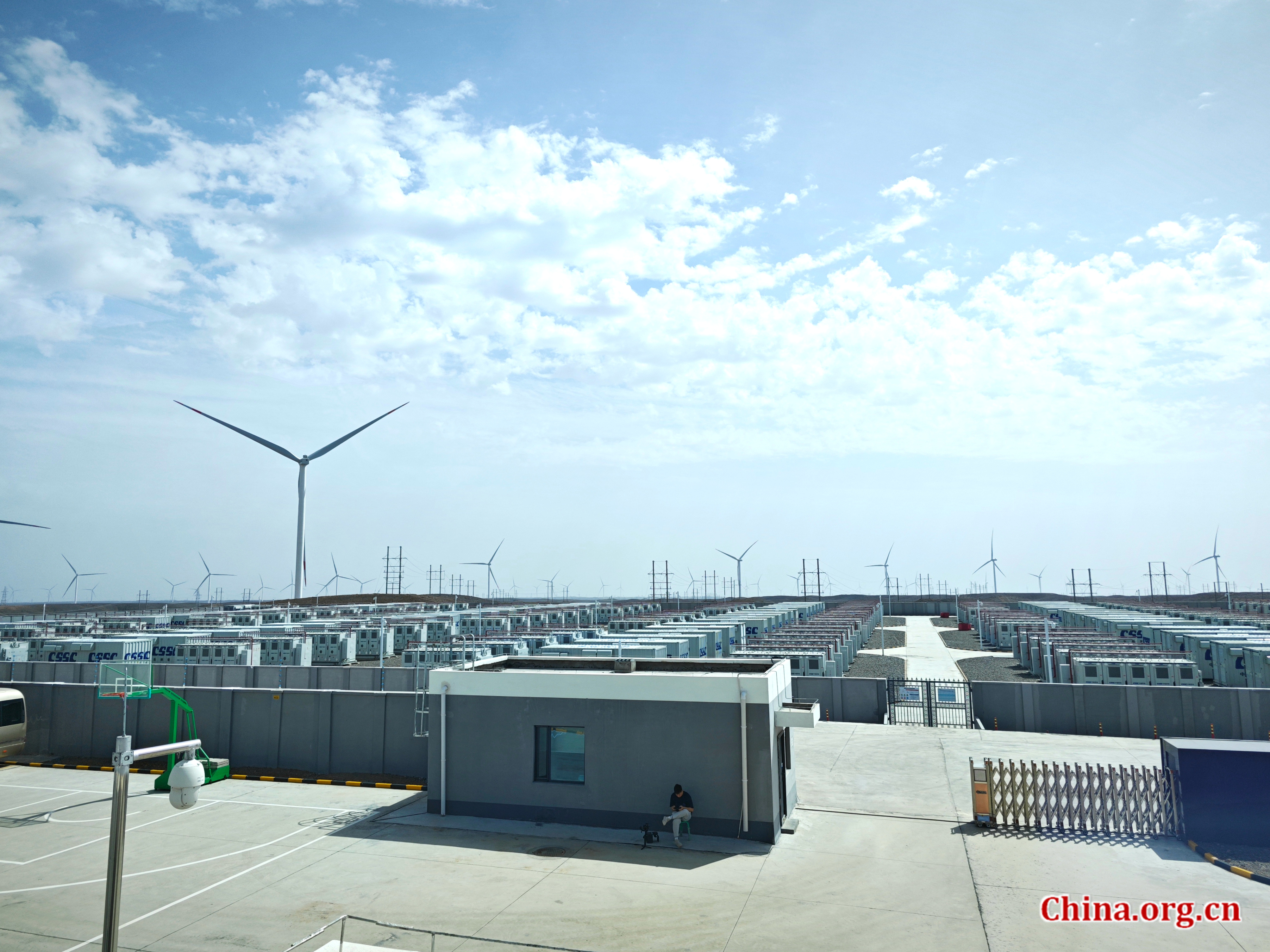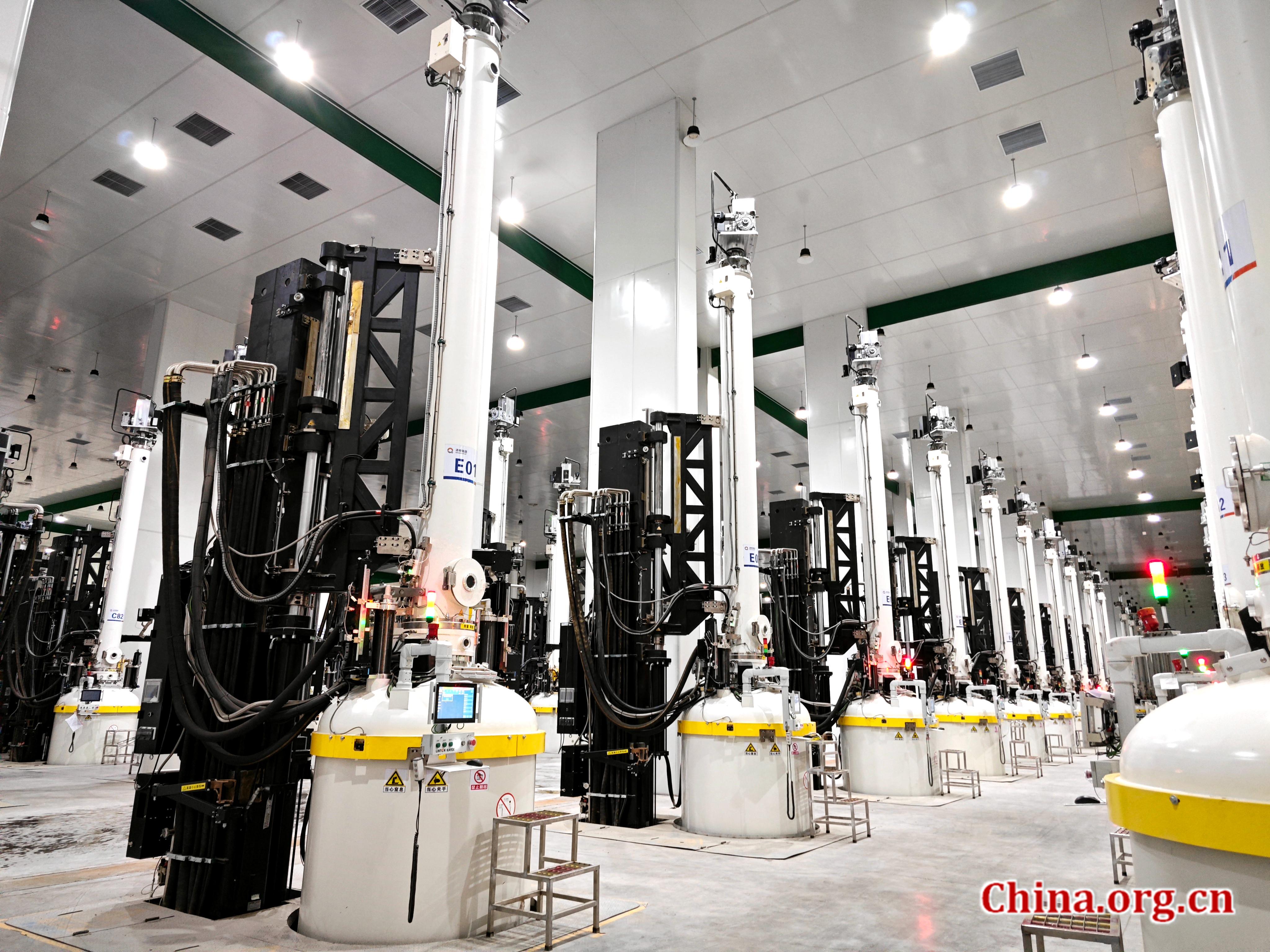
 0 Comment(s)
0 Comment(s) Print
Print E-mail China.org.cn, August 28, 2024
E-mail China.org.cn, August 28, 2024
The city of Hami in the Xinjiang Uygur autonomous region is rapidly becoming a leader in renewable energy. Boasting vast wind and solar resources, it is transforming its energy advantages into significant economic opportunities.
"Hami is one of the best regions in China for wind and solar energy," said Li Jianyong, the city's vice mayor, on Aug. 25.
The city covers 66.3% of Xinjiang's wind zone, with a technical wind energy development capacity of 303 million kilowatts, which accounts for 6% of the national onshore wind energy potential. Additionally, Hami enjoys 3,170 to 3,380 hours of sunshine annually, making it an ideal location for solar energy projects.
Currently, the city's grid-connected power capacity stands at 28.18 million kilowatts, with renewable sources making up 68.1%. There are ongoing and planned new energy projects totaling 31.75 million kilowatts, with investment exceeding 120 billion yuan, according to the vice mayor.
One of the most important projects is the Shisanjianfang wind-storage power station, now the largest integrated wind-storage project in Xinjiang. Developed by China State Shipbuilding Corporation Wind Power Development Co. Ltd., the project is located in the heart of the "Hundred Mile Wind Zone," a region in Hami renowned for its consistently strong winds.

The Shisanjianfang wind-storage power station in Hami, Xinjiang Uygur autonomous region, Aug. 26, 2024. [Photo by Wang Yiming/China.org.cn]
Li Shuai, deputy director of the wind farm operation center, said, "The project site experiences over 200 days of strong winds annually, with extreme wind speeds reaching up to 50.28 meters per second."
The company customized the development plan based on this abundant resource and natural conditions, installing 150 H176-6.7MW low-temperature wind turbines and a 300,000-kilowatt/1.2 million-kilowatt-hour energy storage station. Using a wind-storage collaborative control system, the project maximizes the utilization of wind resources and improves the stability of power grid connection.
Li Shuai noted, "The project was connected to the grid on March 28, 2024, and is expected to generate approximately 3 billion kilowatt-hours of clean electricity annually. This is equivalent to saving about 900,000 tons of standard coal, and reducing carbon dioxide emissions by 2.8 million tons and nitrogen oxides by over 11,000 tons each year."
The project significantly enhances local clean energy supply capabilities, promoting high-quality, low-carbon development and delivering substantial socio-economic benefits, Li Shuai added.
In recent years, Hami has accelerated its development of not only wind, but also solar energy, transforming its energy advantages into manufacturing strengths.
Qingdian Silicon Industry Co. Ltd., a company that produces and sells monocrystalline silicon rods, is a prime example. Qin Xiandong, senior manager of the technical R&D department, said: "We chose to establish our factory in Hami due to Xinjiang's land resource advantages, lower land and electricity costs, and stable power supply system. The local government also provides substantial policy subsidies."

The manufacturing area of Qingdian Silicon Industry in Hami, China's Xinjiang Uygur Autonomous Region, Aug. 27, 2024. [Photo by Wang Yiming/China.org.cn]
Qin emphasized that Xinjiang's extensive sunshine makes it an ideal location for photovoltaic power stations, predicting a bright future for local solar energy applications.
Tang Lanhai, deputy general manager of Hami CRRC New Energy Motor Co. Ltd., is also optimistic about Xinjiang's renewable energy prospects.
"Xinjiang is among the fastest-growing regions for land-based wind projects in China," Tang explained. "In the past, it faced challenges transmitting electricity to major consumption areas. However, significant investments in ultra-high-voltage transmission infrastructure have resolved these issues. Xinjiang now has the capacity to supply clean energy to the entire country, positioning it as a key player in China's transition to a greener economy."
From January to June, Xinjiang added 4.28 million kilowatts of wind power capacity and 9.8 million kilowatts of photovoltaic capacity, with new energy generating 59.21 billion kilowatt-hours of electricity, representing a 39.3% year-on-year increase.
Go to Forum >>0 Comment(s)